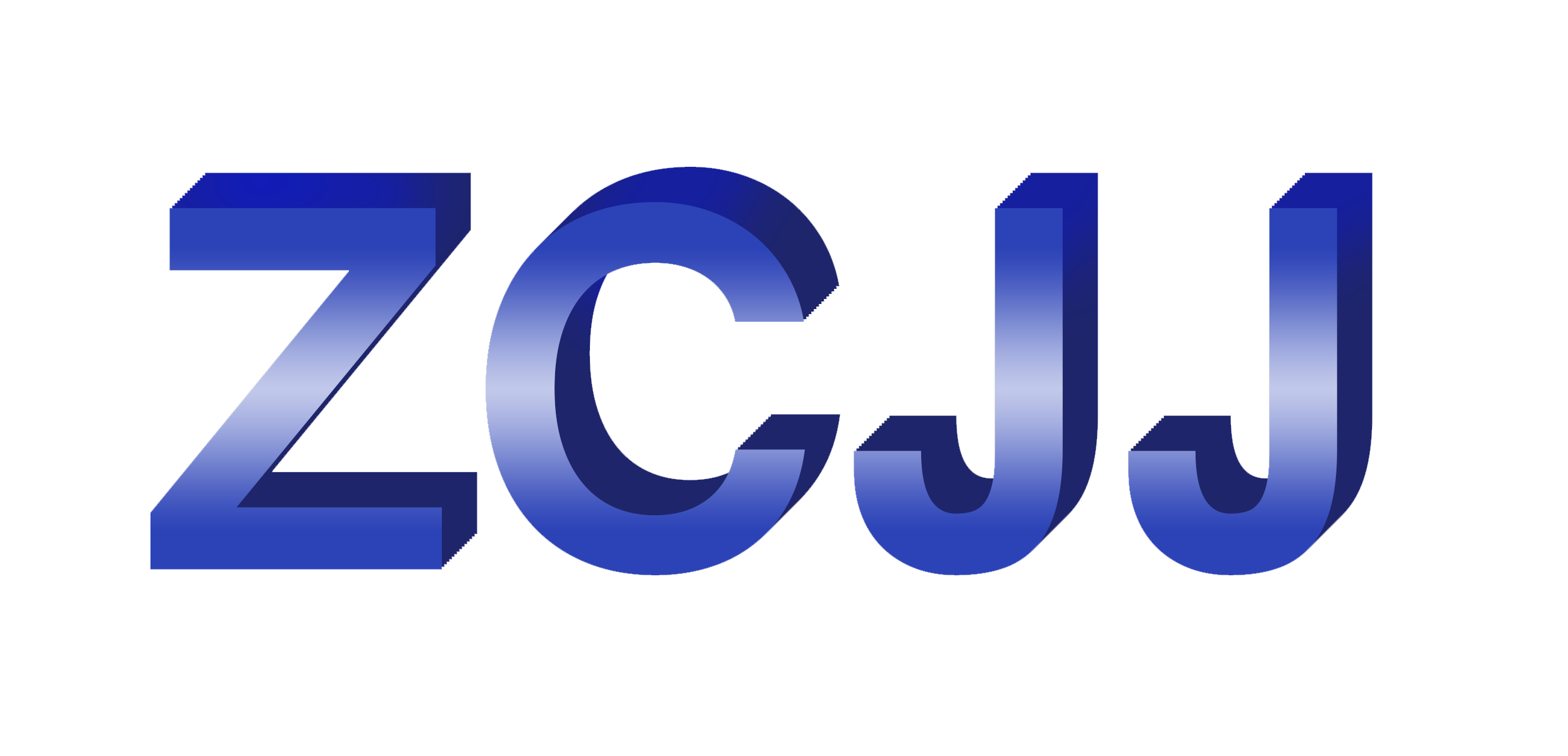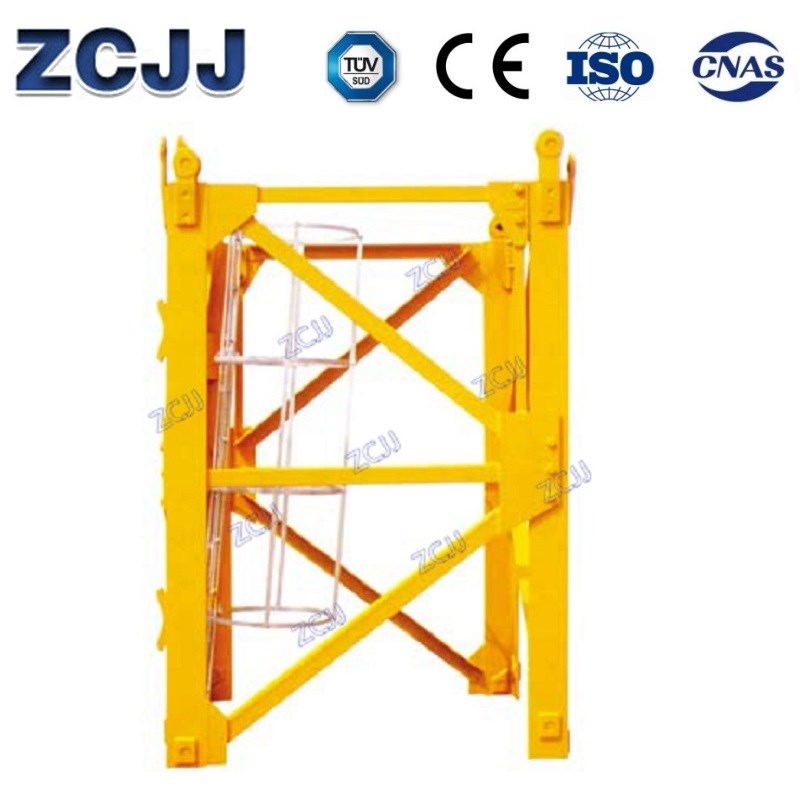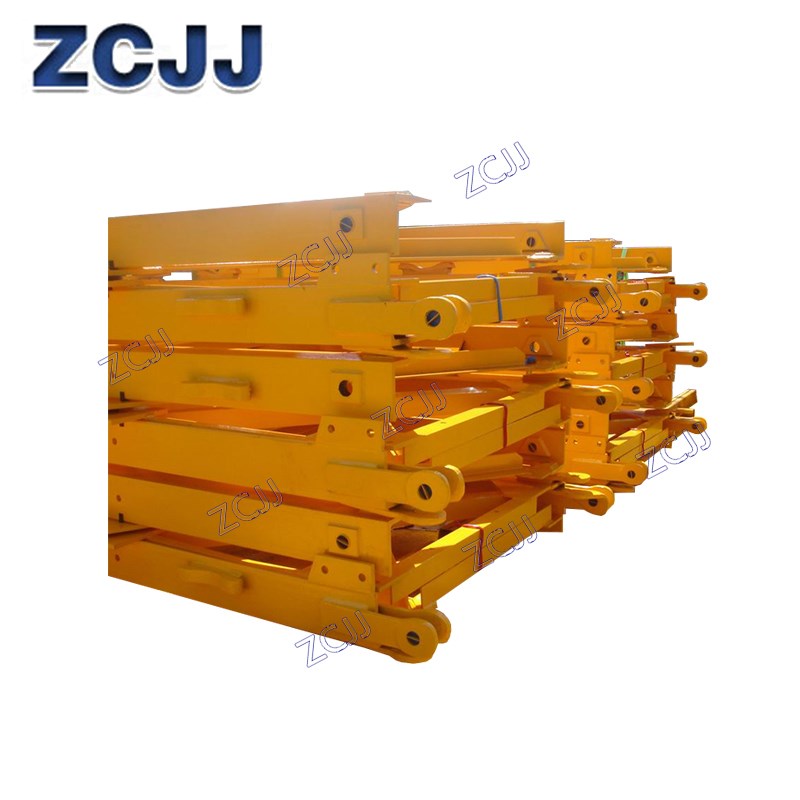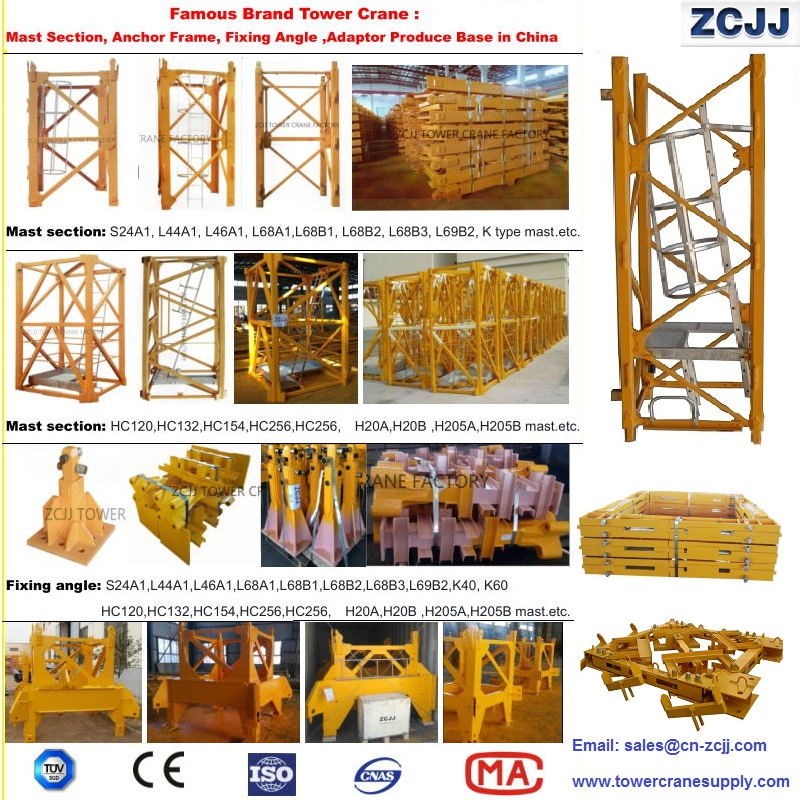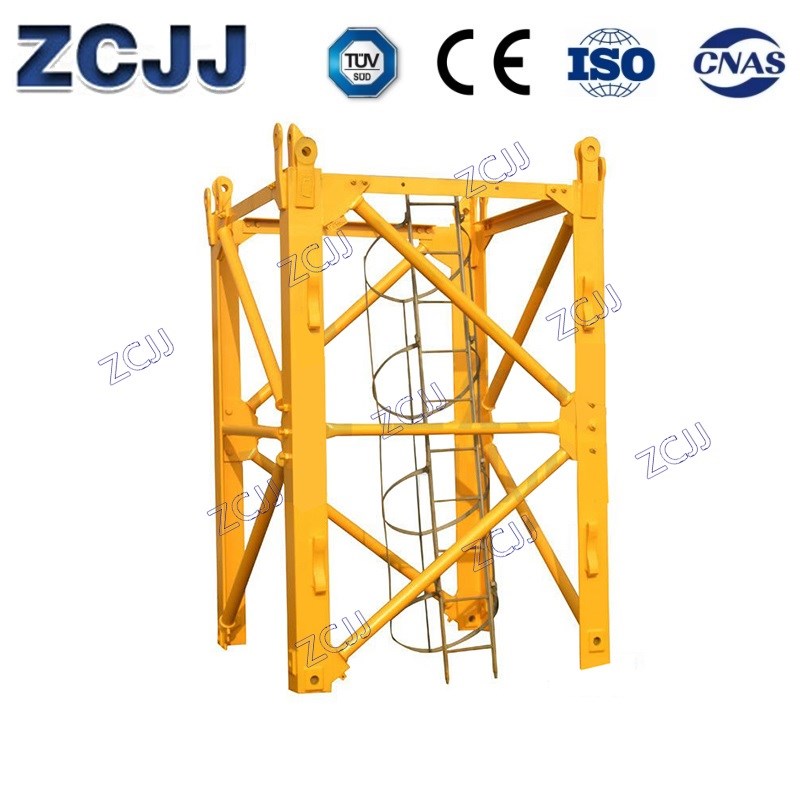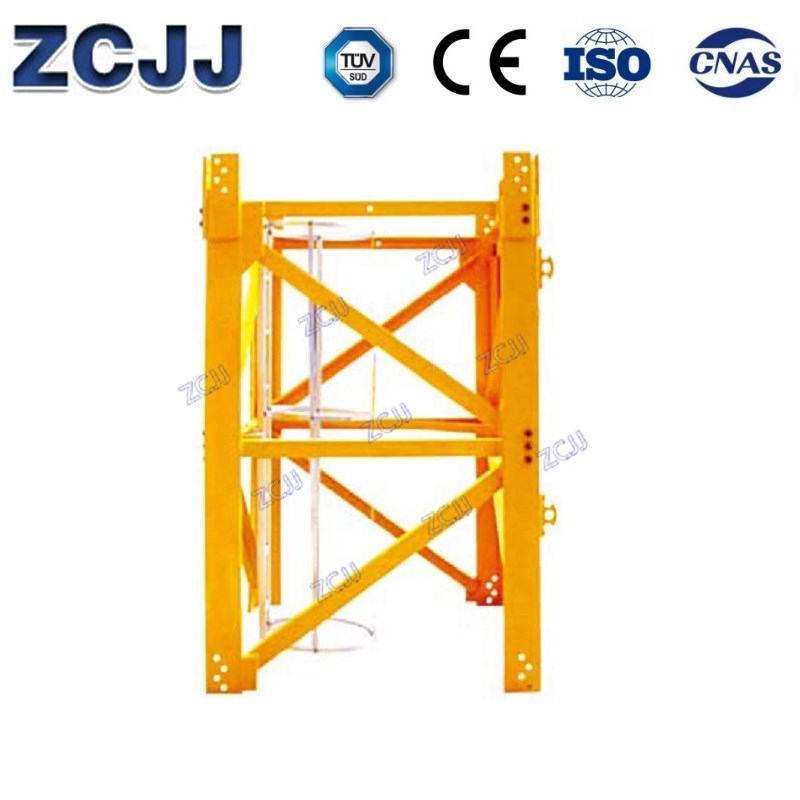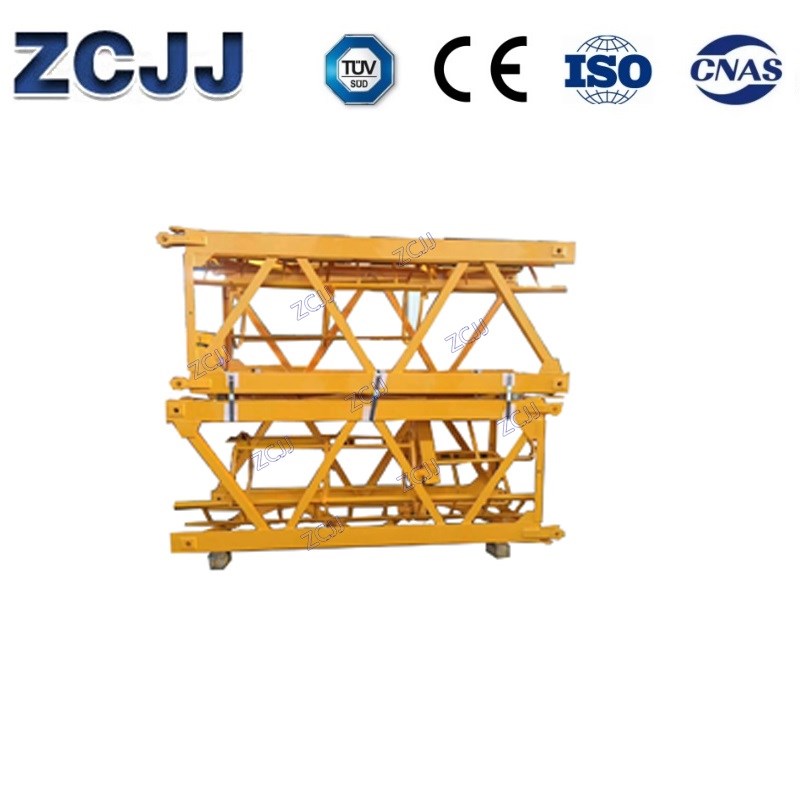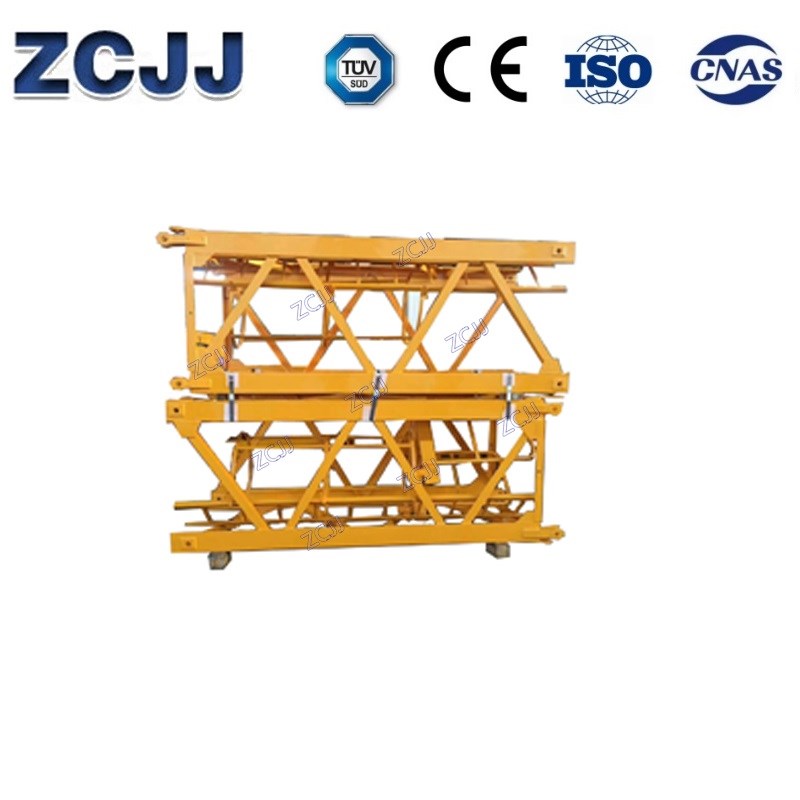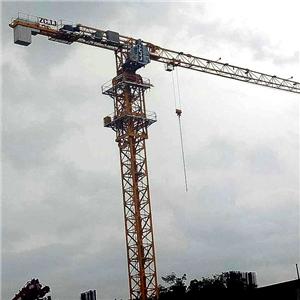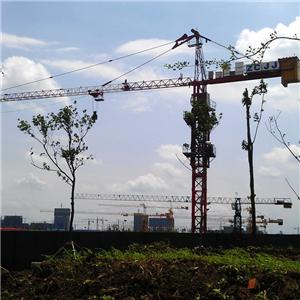L68A1 Mast Section For Tower Crane Masts

- ZCJJ
- China
- 10days
- 50pcs
SCM C6018 Mast section
SCM F0/23B (C) Mast section
SCM F2/23B Mast section
SCM C6015 Mast section
Products Specification
Type , Model: L68A1 Mast Section For Tower Crane Masts
Size: 2mx2mx3m
Materials: Q345B
Within: Pins, bolts, Ladder, Platform
Process: Blasting derusting,
Painting: Under painting , Middle painting, Surface painting.
Our factory produce and supply almost all famous brand tower crane :Mast section, Anchor Frame, Fixing angle ,Adaptor and so on as good quality and price.
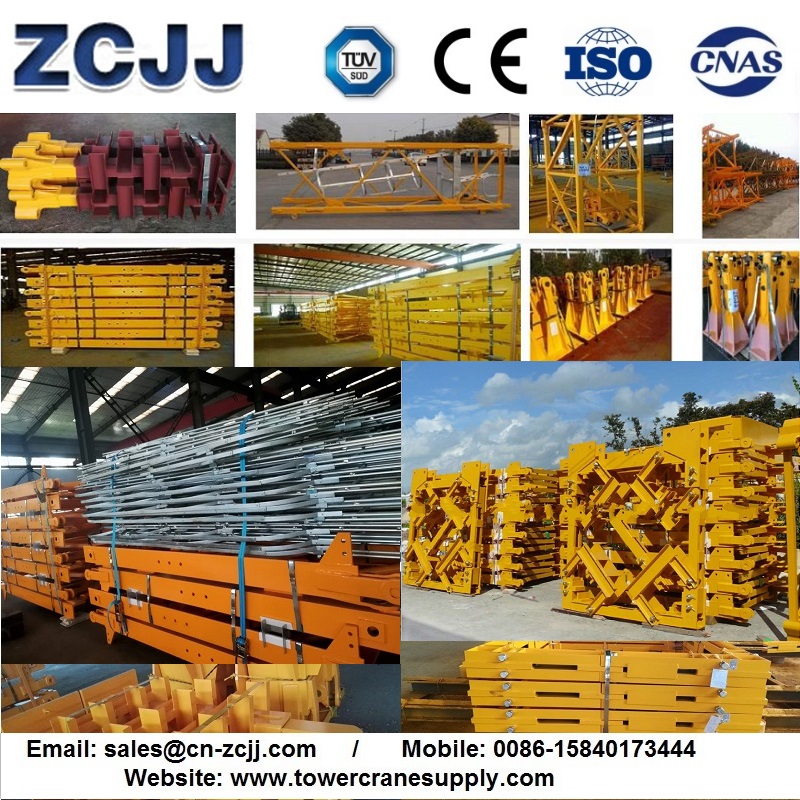
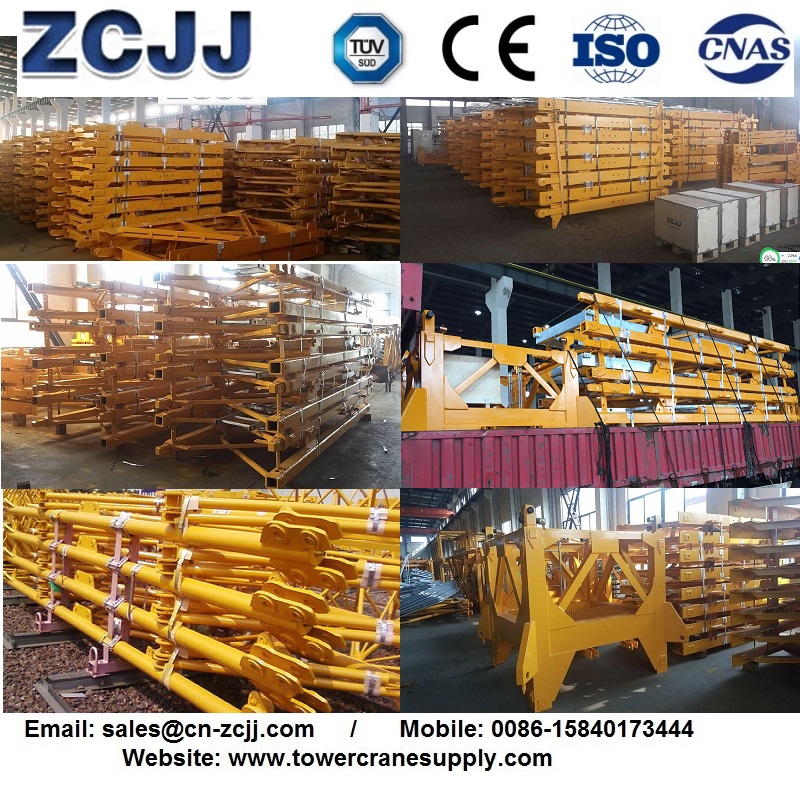
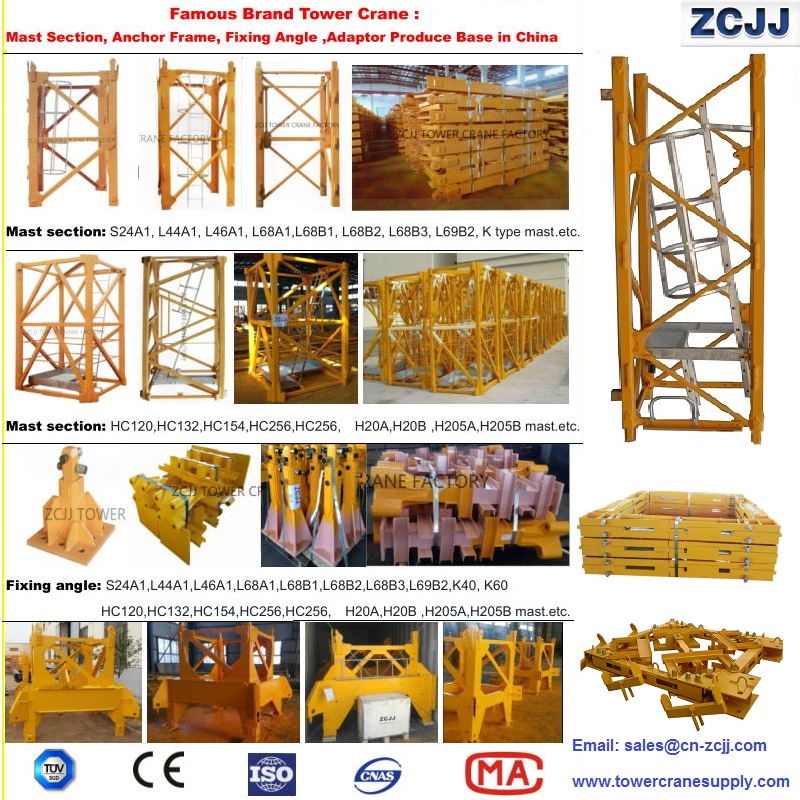
L68A1 Mast Section For Tower Crane Masts
Tower Crane Knowledge sharing:
How to determine the location of the tower suspension? What should be paid attention to when lifting?
How to determine the location of the tower suspension? What should be paid attention to when lifting? When lifting a large part, the position of the hanging point must be reasonably determined.
If the application statement does not indicate the location of the hanging point, the hanging structure must indeed pay attention to two aspects:
1. Balance of suspended components. For long structural parts, such as lifting arms, balance arms, can be tested hanging in the ground mouth, determine a fair hanging point.
2. Structural strength at the suspension point and fixation of the suspension cable connection. If the strength of the hanging point is not enough, the structure will be destroyed, and the situation in the individual eyes will cause damage to all the structure parts.
The sling cables shall not slip and fall off at the sling point. Individual Sling cables shall be connected to the nodes of the suspended structure and shall not be connected to the middle and abdominal rods of the main string. Padding blocks should be added between sling and object edges.
L68A1 Mast Section For Tower Crane Masts
In addition, the issues to pay attention to when lifting the tower:
Tower hanging standard sections of different sections: Some tower hanging tower body standard section is divided into two or more specifications according to the strength of the bar parts, different specifications of the scale section shape is the same, only the main string wall thickness is different, in the appearance is not easy to distinguish.
L68A1 Mast Section For Tower Crane Masts
After the height of the tower crane is determined, the device box must be added to the section as required by the use of the explanation book. The detailed model logo of the standard section on the tower must not be mixed.
Different arm length balance heavy block configuration: For tower cranes that can change arm length, the weight of the balance weight is changed with the length of the arm, and this should be noted when installing.
To be properly installed according to the number, specification and location of the balanced heavy blocks defined in the instruction manual. Unaccurate installation position of the balance weight block will cause the balance moment deviation between the lifting arm and the balancing arm to be too large, which will easily cause the tower crane to lose stability.
What is the reason for the shaking and noise when the tower ceiling rises?
Analyze, hoping to help the tower crane operator.
Fault analysis and treatment method of jitter and noise when tower ceiling is lifted:
1. Causes of failure: The hydraulic system is mixed with air.
Solution: Exhaust.
1. Fault cause: oil pump suction.
Solution: Come on.
1. Causes of failure: mechanical mechanism, hydraulic cylinder whole machine is too tight.
Solution: overhaul, replacement.
1. Causes of failure: internal leakage or oil seal damage in the system.
Solution: check or change oil seal.
1. Cause of failure: Hydraulic oil deteriorated.
L68A1 Mast Section For Tower Crane Masts
Solution: exchange hydraulic fluid.
Analysis on the Causes of Common Fault of Tower Hang and the Corresponding Treatment
Tower crane is an important lifting equipment in the construction industry. There will be many failures in the use process.
There are many reasons for this. In summary, it is mainly due to poor working conditions, delays in maintenance, illegal operations by operators, and natural wear and tear of parts and components.
In addition, accidents sometimes occur when the tower is suspended during commissioning.
When there is an anomaly in the tower crane, the operators such as the installation and unloading worker and the tower crane driver shall immediately stop the operation, report to the relevant department in a timely manner, and the full-time maintenance personnel shall come to repair, deal with the hidden dangers in a timely manner, and resume normal work.
The common faults of Tower hoists are generally divided into two categories: mechanical faults and electrical faults.
L68A1 Mast Section For Tower Crane Masts
Due to wear, deformation, fracture, clamping, poor lubrication, and incorrect relative position of mechanical parts, the mechanical system can not operate normally, which is collectively referred to as mechanical failure. Mechanical faults are generally obvious, intuitive, and easy to judge. In the tower lifting operation, it is more common.
Due to the failure of electrical lines, components, electrical equipment, and power supply systems, the power system can not operate normally, which is collectively referred to as electrical failure.
There are relatively many electrical faults, some of which are more intuitive and easy to judge, and some of which are relatively hidden and difficult to judge.
Power supply mode and protective measures of tower crane, function of emergency stop button
L68A1 Mast Section For Tower Crane Masts
Tower crane is a large lifting equipment, its power consumption is relatively large, so, safety and security measures must be safe and reliable.
Through this article, power supply tower crane and protective measures, tower crane emergency stop button function, two issues with the majority of peers discussed.
Power supply mode and protective measures of tower crane
Tower power supply generally uses 308V, 50Hz three-phase five-wire switching power supply, construction site power supply should be "three-level distribution, two-level maintenance" electricity request.
The tower hoist shall be provided with a special switch box, and the voltage stability of the power supply system at the tower hoist access shall not exceed ± 10 % of the additional value.
The power supply capacity should be satisfied with the minimum power supply capacity of the tower crane. Energy appliances should not be less than 0.5 M of ground insulation resistance against controlled circuits.
The tower hoist shall be provided with short circuit, overcurrent, underpressure, overpressure and loss of pressure protection, zero-position cover, power source error and break-phase protection according to the delineation.
The electric control cabinet(special switch box) shall be provided with a door lock. Inside the door there should be an electrical diagram or a layout diagram, operation instigating, etc..
There should be an electric hazard warning Mark outside the door. The protection level is not lower than IP44.
Tower crane emergency stop button
The operation of the tower crane is individually controlled by the linkage table and an emergency stagnation button is set.
Before the tower crane work, the operating handles of each institution must be placed in zero position to prevent accidental operation. In case of urgency, quickly press the emergency stop button on the tower crane to end all actions.
What are the basic parameters of a tower crane? What are the criteria for basic parameters?
The basic parameters of the tower crane are the standards for the characteristics of the tower crane. It includes lifting weight, lifting moment, lifting height, working speed, amplitude, lifting arm inclination, total weight of the tower crane, and wheel pressure. Each parameter is summarized below.
1. Weight G
The maximum component of the tower lifting material allowed to rise is called tilting weight G.
For tower hoists with variable amplitude, the rated weight of Tower hoists is determined according to the amplitude.
The weight(other than the hook set) of the crane is installed on the mount and shall be included in the rated starting weight. Such as grab, lifting electromagnet, hanging beam and various help lifting weight.
2. Lift torque
The product of lifting G and amplitude L is called lifting torque(load torque).
Rated lifting moment: product of rated starting weight G and amplitude L.
SYM H20/15(QTZ115) Mast section
SYM FO/23B(QTZ145) Mast section
SYM H25/15(QTZ145) Mast section
SYM H25/23(QTZ180) Mast section
YONGMAO STT153 Mast section
YONGMAO ST5515B Mast section
YONGMAO STT133 Mast section
YONGMAO STT113 Mast section
YONGMAO ST60/15 Mast section
YONGMAO FO/23B Mast section
YONGMAO ST55/13 Mast section
SYM R55/15(R55/15) Mast section
SYM SP60/10(QTZ125) Mast section
SYM SP6010(QTZ125) Mast section
SYM SP60/13(QTZ125) Mast section
SYM SP60/13(QTZ140) Mast section
SYM R70/15(R70/15) Mast section
SYM R70/15B(R70/15B) Mast section
FO 23B
6015
SCM C6018 Mast section
SCM F0/23B (C) Mast section
SCM F2/23B Mast section
SCM C6015 Mast section
SCM C6015 (6T) Mast section
SCM C6013 (8T) Mast section
SCM C6013 (6T) Mast section
SCM C6010 (8T) Mast section
SCM C6010 (6T) Mast section
SCM Q6010 Mast section SCM
SCM C5513 (8T) Mast section
SCM P7015 (12t) Mast section
SCM P7015 (10t) Mast section
SCM P7015 (8t) Mast section
SCM P6015 (10t) Mast section
SCM P6015 (8t) Mast section
SCM P6015 (6t) Mast section
SCM DZ80 Mast section
SCM 360B Mast section
